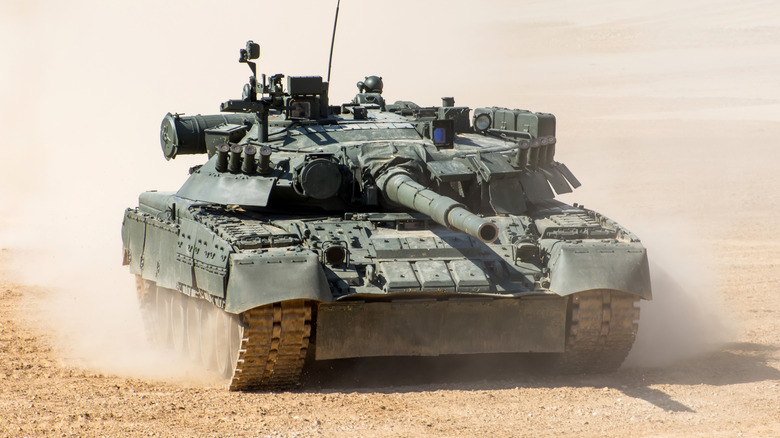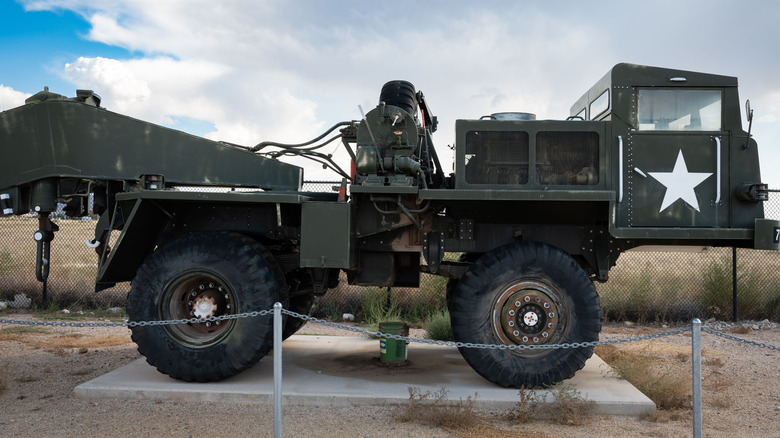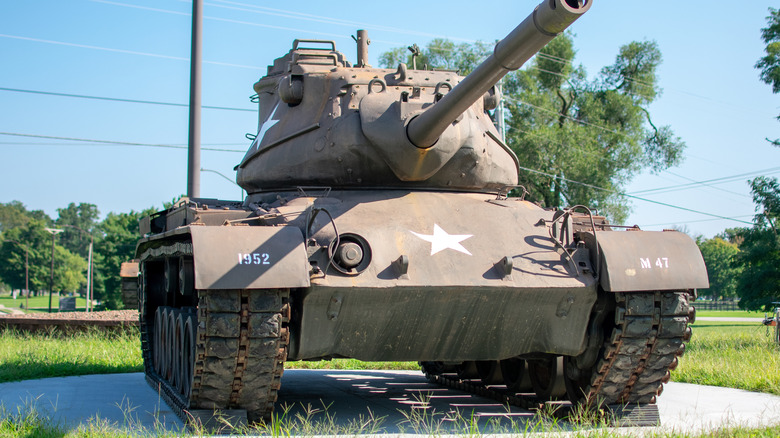What Does The US Military Do With Its Old Tanks And Armored Vehicles?
Armored vehicles are a significant component of modern warfare. Whether it be tanks intended to plow through enemy forces or armored vehicles designed to transport troops, supplies, and more through hostile areas, these modes of transportation have become essential to the war effort. It has been well over a century since the United States military's first tank and armored vehicles became a reality. Much like these original models, over time, military tanks and vehicles are retired from the battlefield for one reason or another.
So, what becomes of these battlefield behemoths once they're decommissioned? In many cases, old tanks and armored vehicles are sold off to other countries in need of such heavy machinery. This is a great way for the United States to support its military allies while also making from old equipment. The countries that receive them then find use for them, however they see fit.
For example, Business Insider reported that armored personnel carriers previously used by the U.S. military during the Vietnam War era were sent over to Ukraine. They were converted into armored ambulances in the hope of protecting the wounded and saving lives. As for the old tanks and armored vehicles that remain under U.S. supervision, they can meet a few different fates. Unfortunately, not all of them are all that glamorous.
Tanks and armored vehicles can meet a range of fates
A few different things can happen to the many top-tier M1 Abrams tanks and outdated armored vehicles left to the United States. They're often put on display and used to commemorate specific conflicts, battles, and overall military history. One of the most high-profile setups is at the Smithsonian Center for Folklife and Cultural Heritage, which houses all kinds of armored vehicles in its military equipment display. If they're not displayed, many are simply placed in long-term storage. Hundreds of tanks are put in storage at the Sierra Army Depot near Herlong, California, for example.
Old, worn-out, or otherwise unrepairable tanks and trucks can be recycled, with entities such as the Defense Logistics Agency overseeing such vehicles being turned into scrap. Before this happens, though, efforts can be made to get another use out of these dilapidated vehicles. They're often used for some form of training, such as target practice, to give soldiers as close to a real-life simulation of the battlefield as possible without wasting new, perfectly operable equipment.
With all of that said, the matter of acquiring a retired tank or armored vehicle as a civilian should be addressed. For those curious, let's delve into the broad strokes of how possible this is and what it takes to own such a piece of military history.
Civilian ownership of a retired tank or armored truck
Though there are plenty of old war vehicles still in use today, not all have enjoyed such longevity. Some have been trashed, others put on display or stored away, with some even finding a new life in the hands of civilians. Yes, owning a decommissioned tank is entirely legal on the federal level, though that's not to say it's easy. The tank must be demilitarized, meaning the main gun and other warfare elements must be removed or disabled. Ownership is also entirely dependent on state and local laws, and tanks are only street legal in certain areas.
On top of all of this, there are heavy costs involved, as well as no shortage of paperwork to ensure your tank is legally owned. The same can be said when attempting to purchase a military armored vehicle. They can cost hundreds of thousands of dollars and must be demilitarized before they can be legally owned. If you want to use it on a public road, necessary adjustments must be made in order to meet regulations.
Naturally, if such vehicles are to be driven in public areas, it goes without saying that a driver's license is essential to stay on the right side of the law. Also, be advised that since these are massive, bulky, formerly active machines of war, odds are you're going to end up paying a pretty penny to fill up the gas tank.


